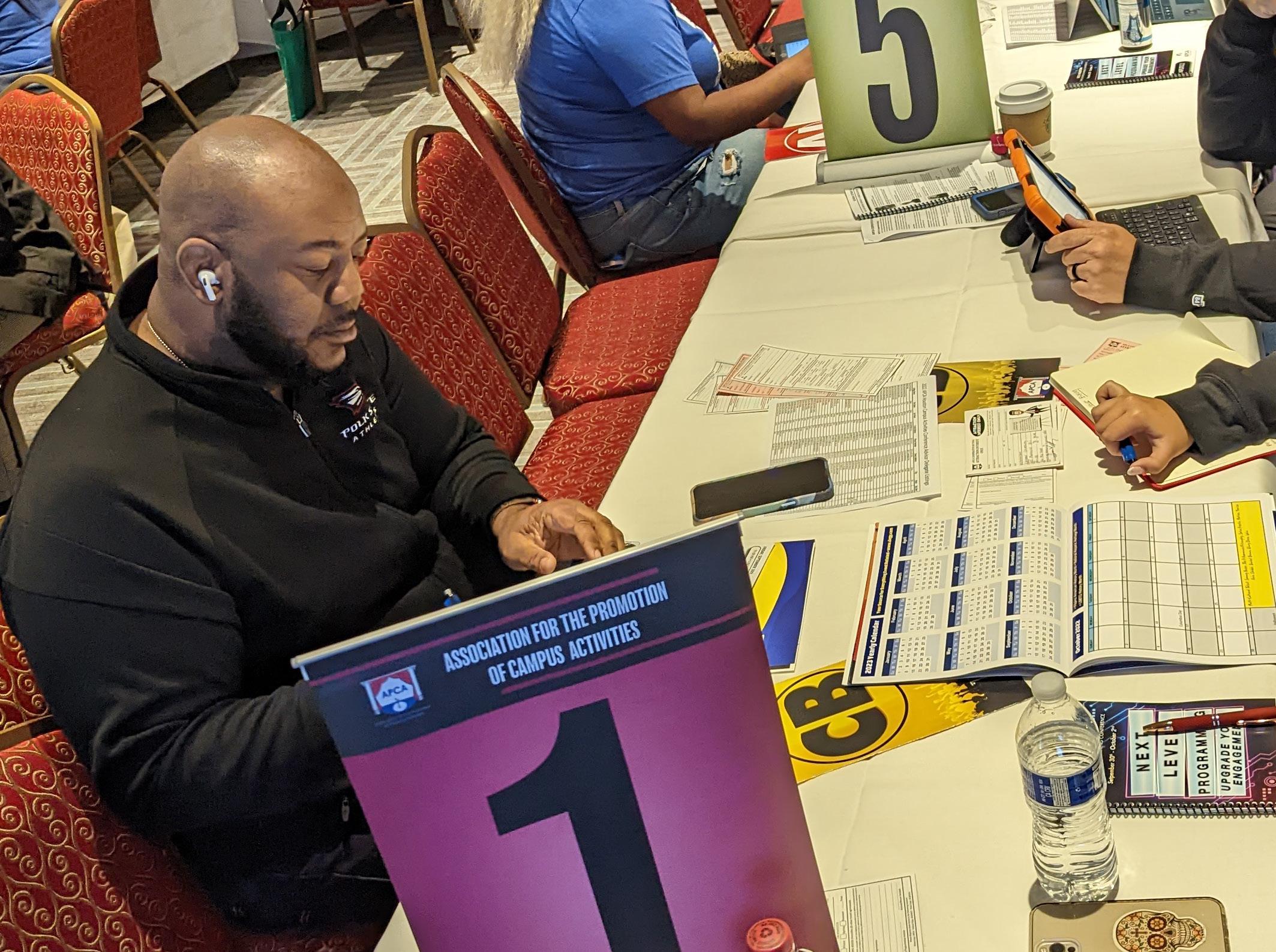



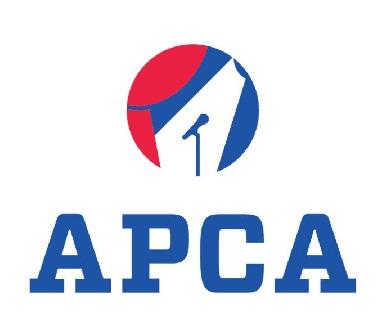

SPRING 2023 WWW.APCA.COM FOLLOW US: CLT VISIT US ONLINE: IN THIS EDITION • Adding Text Messaging to Your Marketing Strategy • Transform Your Student Programming with Microfeedback • Scavenging for Success CAMPUS LIFE TRENDS Congratulations to the 2022 Regional Award Winners! ~page 14 The National Campus Activities Planning Conference will be held in Hershey, PA, March 16-19, 2023. It's time to fill your calenders with talented artists! ~page 10
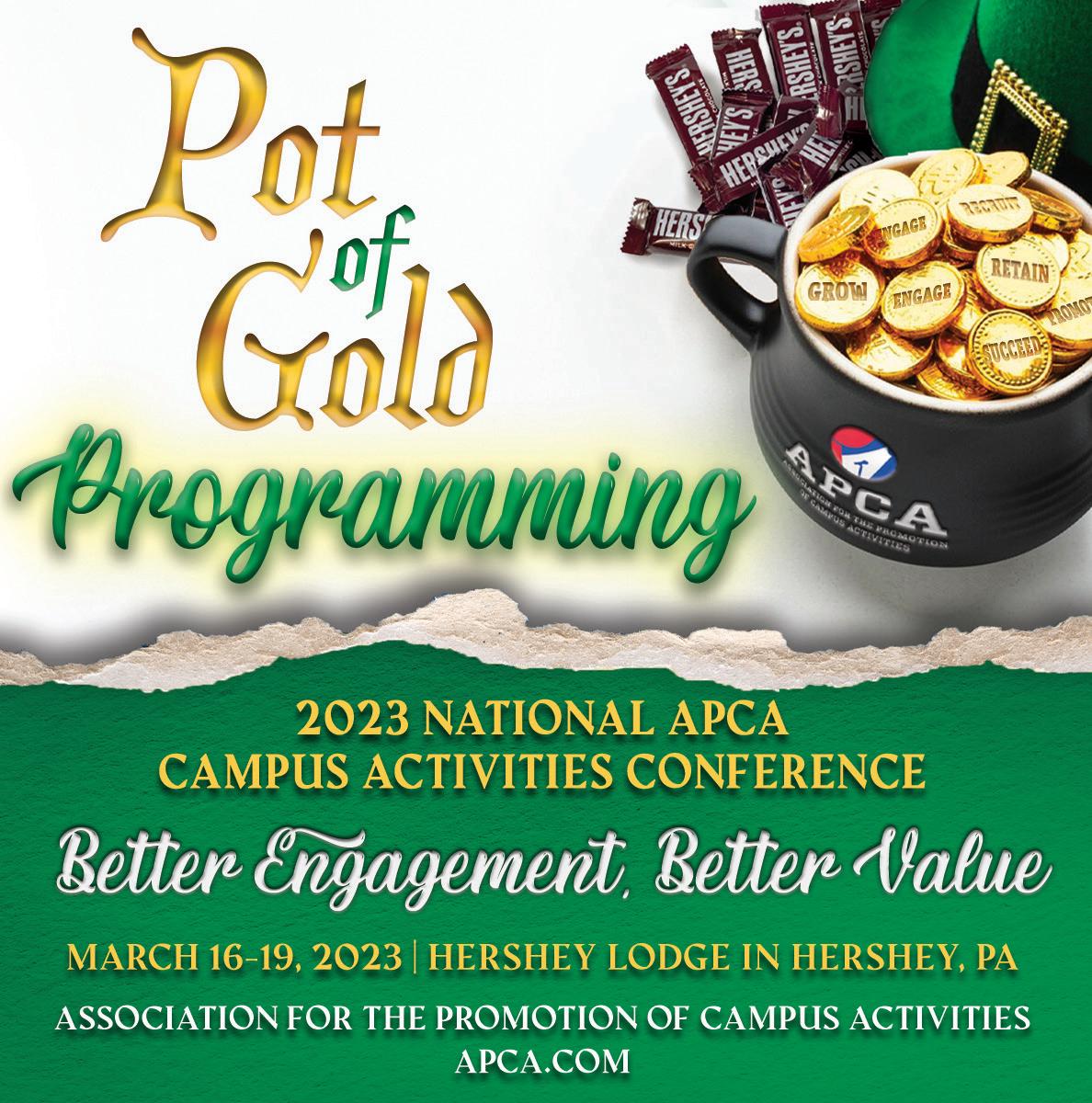
GRAPHIC DESIGNER: KRISTY LAVELLA THANKS TO ALL THE SCHOOLS AND ASSOCIATES WHO CONTRIBUTED TO THIS EDITION OF THE CAMPUS LIFE TRENDS MAGAZINE.
THE APCA CAMPUS LIFE TRENDS MAGAZINE IS PUBLISHED EACH SEMESTER. SUBMISSIONS FOR ARTICLES MUST BE EMAILED TO: MARKETING@APCA.COM
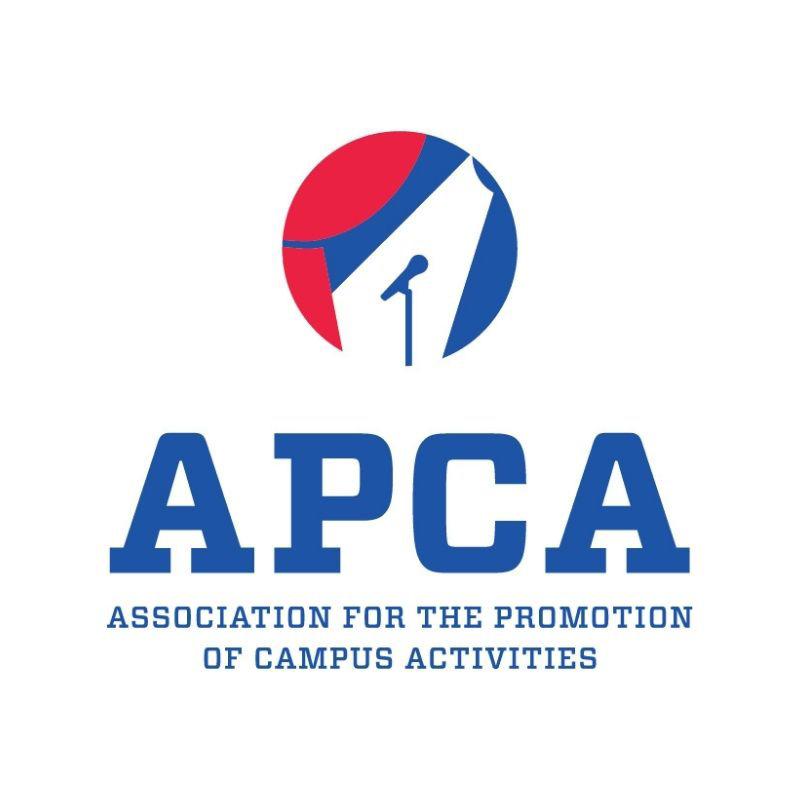








THE CAMPUS LIFE TRENDS MAGAZINE IS A TRADEMARK OF THE ASSOCIATION FOR THE PROMOTION OF CAMPUS ACTIVITIES. ALL RIGHTS RESERVED. NO ARTICLES OR IMAGES OF ANY KIND MAY BE REPRINTED FROM THIS MAGAZINE WITHOUT THE WRITTEN PERMISSION OF THE ASSOCIATION FOR THE PROMOTION OF CAMPUS ACTIVITIES. ANYONE SEEKING PERMISSION SHOULD FORWARD THEIR REQUEST BY EMAIL TO: INFO@APCA.COM

CONTENTS 4 From the Desk of the Executive Director ~Eric Lambert Executive Director, APCA 6 Adding Text Messaging to Your Marketing Strategy ~Stacey Sottung OnCampus Text 8 Wait. What Did the Leader Say? ~Dr. June Hall Speaking Foundation 10 2023 National Campus Activities Planning Conference 14 2022 Regional Award Winners 16 Transform Your Student Programming with Microfeedback ~Arel Moodie Talkadot.com 20 APCA Serves!™ ~Dave Kelly America's Student Leadership Trainer 22 Scavenging for Success ~Chris Sparks Surelocked In Escape Games 24 Cooperative Buying 26 Getting and Keeping Students Engaged ~Del Suggs, M.S.Ed. 28 Liability for Student Events ~Paul A. Samakow The Law Offices of Paul A. Samakow 33 Engagement Through Storytelling and Humor ~Aidan Park GP Entertainment Appearing at the 2023 National Conference in Hershey, PA.
865.429.9123
EDITOR: HEATHER LAMBERT
CLT Magazine | SPRING 2023 3
FROM THE DESK OF THE EXECUTIVE DIRECTOR, ERIC LAMBERT

elambert@apca.com

COLLABORATION FOR RETENTION AND STUDENT SUCCESS
We’ve all read about the importance of collaboration for student life. The more academics and student services work together, the better the learning environment. The closer that student organizations work together, the more effective the campus life programming will be. Ultimately, the closer we as professionals work with students on developing their own potential, the better chance they have at success in their professional and personal futures.
These students come to us for a better life. They seek a better opportunity and are paying dearly for it. They want a career, they want self-sufficiency, and they look to us to give them the tools to achieve these goals. We must ask ourselves, how are we as student life professionals working with our students and academic peers to meet this need?
Come join APCA as we take student engagement, recruitment, and retention to a whole new level. Be a part of the movement to lead our students to a successful life and a fulfilling professional career. Let’s collaborate for the future of our schools, our enrollments, and our campus populations. Join the APCA family and your Student Life peers from around the country at the National Campus Activities Conference in Hershey, PA. We believe that engaged students are retained students, and we look forward to building a strong future together.

 Eric Lambert
Eric Lambert

CLT Magazine | SPRING 2023 4
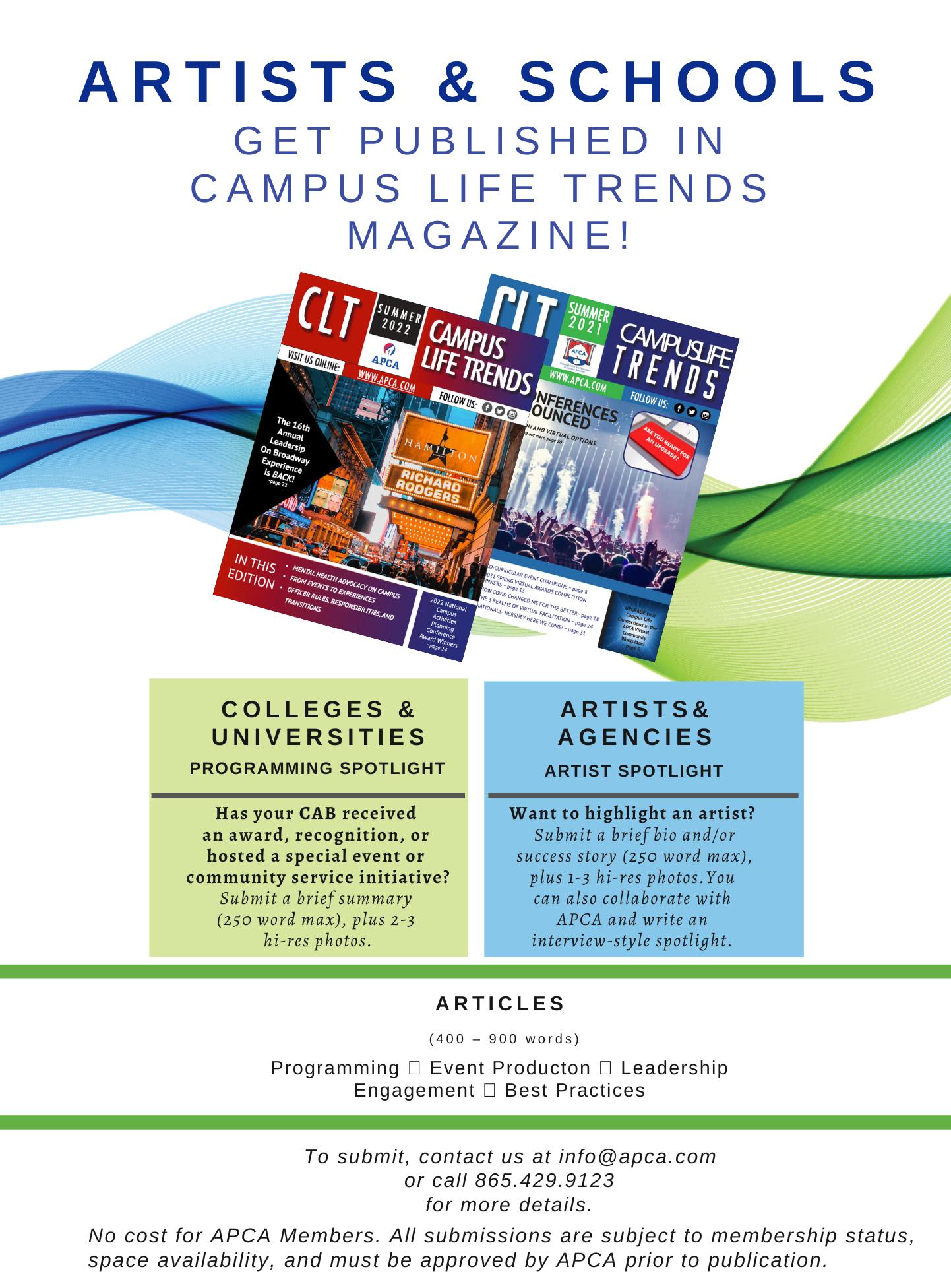
CLT Magazine | SPRING 2023 5
Take a minute to think about your program board's marketing strategy. First, is there one? If there isn’t, that’s a whole different article. If there is, let’s analyze it. When I talk to schools, I hear that they are using components such as flyers, campus-wide emails, digital message boards sprinkled around campus, and social media platforms like Facebook, Instagram, TikTok. This launches a conversation about how effective each one of those components are, and many times social media is perceived to be leading the way in how boards are reaching students. My next question, “What would you do if those platforms got shut down or started charging?” typically brings crickets and a look of shock. These are both very real possibilities when you are putting eggs in a basket that you can’t control. Let’s talk about a marketing component that you would have full control over-- text messaging. This is where OnCampusText comes in.
Let’s start with some data. The #1 reason that students do not come to campus events is because they didn’t know about it. You can change that. Keep reading to find out how and why you should.
98% of US adults have a cell phone. 98% of text messages get opened. Read that again. 98%! Can you say that about your email? I know that for my personal email, I can’t say that. Let’s talk about speed. 95% of text messages are read and responded to in under 5 minutes. I feel pretty confident in saying that we have all responded to a text when we shouldn’t have, either because we were driving, or should have been paying attention to something else. There is something about being able to digest the information quickly that justifies in your mind looking at it almost instantly.









Adding Text Messaging to Your Marketing Strategy








































 Stacey Sottung OnCampusText
Stacey Sottung OnCampusText
Let’s talk specifically about adults ages 18 – 24. People in this age range look at their phone nearly 200x per day, which is approximately every 7 minutes, and send and receive nearly 4,000 texts per month. Ten years ago, that number was 2,500 per month. If you are trying to market a student event, the fastest and most efficient way to communicate with your student body is to text them. There are times when people take a break from social media, but it is very rare that someone takes a break from looking at their texts. Texting is the primary way that students communicate with each other, so why would you use a different method to communicate with them? Data also suggests that a 15 year old girl is currently sending and receiving 5,800 texts per month, so communicating in this manner is not going away. It’s increasing rapidly.

stacey@oncampustext.com
CLT Magazine | SPRING 2023 6
What are a few ways you could incorporate text messages into your strategy?























First, create a text list. Available software programs make this as easy as writing an email. Your students text a keyword (for example, CAB, HAWKS, APB) to a short code and they are automatically opted in to your list. When starting out, use your other marketing channels to spend some time driving your student body to “Text EAGLES to 71444” for example. You will include this info on your flyers, as text in your IG stories, on the bottom of campuswide emails, etc. You can also run fun contests to encourage students to opt-in, and we touch more on that later.












Once you have students on your list and you are ready to start texting, there are a few rules of thumb you should follow. First, make sure what you are sending is timely and relevant. An hour before your campus event, send out a reminder text. If you are bringing an entertainer to campus, include the link to their YouTube channel in the text for extra engagement. A great idea with sending texts is to be consistent. If you are sending a “What’s up this weekend” text every Wednesday at 8pm, your students will begin to expect it and even look forward to it. When you see attendance for those events increase, you know that you can attribute that to your text list. I encourage you to have fun with these texts. Add in a GIF occasionally. It not only adds a visual element but gives you the opportunity to be personal and establish a voice. A tiny bit of sass goes a long way and will build a relationship with those on your list. When they know, like, and trust you they will pay more attention to what you have to say.
How many times in a programming board meeting have you talked about what the student body wants to see on campus? Wouldn’t it be magical if you could send out a poll and it would show up in their texts? It can! The technology exists that you could send out a question to your list and give them multiple choice answers and they would reply via text. You get almost instantaneous feedback on whatever you are asking, whether it is asking what movie to bring to campus next month or the genre of your next major concert. When a student who voted in a poll sees that they had a say in what comes to campus, that continues to build their trust.
There is nothing like a contest with a shiny prize to get people excited about something. Some of the ways our school partners use mobile technology to run contests are:

Talent Meet & Greets – Run a contest giving away the chance to meet an artist coming to campus. The only way your student body has a chance to be picked is by being on your text list.
Free Stuff – We know that everyone likes free stuff, whether it be a campus hoodie, a gift card, or a parking permit. Choose what makes your campus excited, and raffle one away. The only way they can win is by being on your text list. Another way to do this is sending a text that advertises an event and says “show this text for a free t-shirt”. Your students get free stuff, and your text list grows.
When is the best time to get students opted-in to a text list? Without a doubt, the answer here is at Orientation. It is very likely that almost every student will have the same phone number at Orientation that they do at Graduation. Partnering with Orientation Leaders to encourage their first-year students to opt-in to your list is key. It’s also a great time to run a contest like I talked about above. Once you have them on your list, you can keep them informed for 4 years! That’s a dream!
By including text messaging into your marketing strategy, you establish a direct line with your student body. Stop fighting barriers like social media algorithms or the white noise of cluttered campus bulletin boards. Get your message on the most intimate screen your student has --- their cell phone.





























CLT Magazine | SPRING 2023 7
Are you in a leadership position? Do you have a message? Is it very important? Of course it is, but when no one is listening the value of the message is lost. Effective Communication needed. Sure, we’ve heard it all before. It’s a commonly used phrase. Check out many of the job descriptions. That’s right you’ve read it, “good communication skills” needed. You probably even have it listed on your resume, “excellent communication skills”. What do we even suggest by that? That we speak well or are a good presenter? While that is awesome, let’s delve even further into what effective communication really means. Effective is being successful in what you’re trying to accomplish, and communication is simply sharing information. Easy. We’re successful in sharing information. Then why is it so hard to be understood and make it meaningful? Being that’s the tricky part, let’s see if we can break it down even further and get the communication process flowing.
The initial part of the problem would be the words. Less than 10% of what you say is part of the listening process. While we’re saying the words, people are looking more at our expressions and body language, which means what we’re expressing has to show in how we’re expressing it. The other part is overload. Most people are communicating with others throughout the day but only approximately 50% are really listening. This could be due to feeling overwhelmed at times, especially relating to work situations, and that’s an uphill battle. So now what? What do you do to get your coworkers, students, staff or others to not only hear, but really listen to what we are trying to convey? I hear you! I get it! I acknowledge you! These are three ways to improve our communication skills.
I hear you! Many times in communicating with others, we are so busy waiting to respond that we miss the entire message. We hear something initially and are ready to share without focusing on the rest of what is being said.
WAIT. What Did the Leader Say?
Dr. June Hall Speaking Foundation drjuneaptacious@gmail.com

Be an “active” listener and then others will want to listen to you as well.
Active means you are engaged in what the person is saying. That includes eye contact, nodding, shaking your head if you don’t understand, facial expressions and body language that connects with the message. If we think about it, why would anyone want to listen to someone who doesn’t show interest in listening and in having a two-way conversation. One-sided conversations are dismissive and unacceptable. "I hear you" will strengthen our communication because you are willing to hear what is said in its entirety rather than in parts. Have we missed our chance to get better? No, it’s not too late to begin the listening process. Of course, we have to do this outside of speaking at meetings or dealing with touchy situations with staff members. Start now by incorporating these two other helpful components.

CLT Magazine | SPRING 2023 8
I get it! Now we’re getting it. Hopefully! In other words, we not only “hear” the words, we “understand” the words. Have you ever just said “okay” even though you didn’t quite know what was being said? At times we heard the words but maybe the comprehension wasn’t clear. That’s when we ask a question to get clarification. To ask a question so that the message is clear is actually a positive part of the communication process. Misunderstanding can lead to frustration and sometimes even conflict. Let’s avoid that.
In addition to asking a question, we can use our own words to repeat what was said. In counseling there is something called reflection. This is paraphrasing what was said to let whoever is talking know “I get it”. Also, in offering words back for clarity, our tone and expression shows we understand. Now we’ve shared that we heard the content, responded with the right emotions, and expressed that what has been said is understood. Of course, every conversation is not based on some emotion, but knowing when we need to show understanding of someone’s feelings will only strengthen our ability to relate and communicate better.
I acknowledge you! Acknowledgement is very high on the Effective Communication scale. Here, we are showing there is value in what we have heard. As a leader, our staff and students want to be recognized. When there is a concern, express understanding of that concern as well as recognize there is value in what is being shared. Even if there is nothing that can be done, offering feedback with an explanation could also be helpful.

Three ways to offer feedback are to respond with transparency, be sincere, and ensure the importance of the listening audience.

• Transparency. Clarify you know the importance of what was said and as a leader be honest with the response. For example, I hear what you’re saying and know where you’re coming from to add healthier items in the café and toilet seat covers for the bathroom. At this time, though, we are putting finances into more staff and don’t have the budget.
• Show sincerity. Family is important. I sometimes feel guilty for not spending enough time with them. Hopefully, all will work out well with your situation. Keep me posted.
• I acknowledge you! As staff, students, human beings, you are important! I appreciate what you do and what you offer is valuable and not taken for granted.
Now we have created support and a reason to listen. That is the bottom line. Actively listen, be understanding, and acknowledge the importance of the audience. In return, our audience now has more positive responses. They want to hear what these leaders, individuals, department heads, etc. have to say because they listen and show genuine interest. And there you have it… the communication process.
www.drjunehall.com 813-993-8100 CLT Magazine | SPRING 2023 9
Dr. June Hall is a speaker, lifestyle counselor, and relationship coach.
2023 National Conference in Hershey, PA
March
16-18, 2023!
Get More Value for Your Campus Programming Event Dollars!
Train your campus activities board, find amazing talent for your programs, and save money for your budget at APCA this year! The APCA National Conference is the most affordably priced national campus activities event in the market, and includes three dinners, two lunches, all materials, admission to all events, and great conference swag. You can also get student programmer certification and much more at this amazing three-day event!
Save HUGE Money by Working with Your Neighboring Schools
APCA Cooperative Buying is a program that gives schools attending the conference the ability to merge their buying power, offering associates a block of engagement dates in a specified time period in exchange for a lower price and sharing of travel costs with other schools.


"We have the most value oriented and effective cooperative buying program in the market," says Dave Leenhouts, the APCA Cooperative Buying Coordinator. "Our software allows schools to visualize all the school budget savings immediately. It's user friendly, and within 30 minutes of the completion of the session, the tour schedules are posted."
Register to get more information at www.apca.com
Stop Gambling on Edited VideosConnect LIVE at APCA Showcases and Exhibit Halls!
Schools can meet new contacts, book attractions for their campus programs, or get great resources at the APCA National Conference. APCA showcases the best in campus activities talent LIVE throughout the event. Showcase times will be marked in the program along with pictures, bios, and pricing of the various artists appearing in the program.
The APCA Exhibit Hall will feature associate members bound by APCA Grievance Procedures™ representing the showcasing attractions, novelty showcases, and an APCA resource desk for Cooperative Buying information.
CLT Magazine | SPRING 2023 10
Give Your Board the Tools to Be a Motivated, Successful Team



The APCA conference will host a variety of educational sessions on topics of interest to student and professional campus activities programmers. These educational sessions are included in the APCA conference delegate fees and are open to all delegates. Student leadership and development, advisor professional development, student organizational recruitment & retention, publicity and promotion, diversity and inclusiveness, LGBTQ programming and inclusiveness, assessment, and student engagement are all topics discussed in depth during these open sessions.
Become a Certified Student Programmer
Students who attend all educational sessions and other key conference sessions will recieve a Certified Student Programmer™ Certificate after the conference.
Get Involved or Get More Information!
If you are intereted in registering, getting more information, or volunteering to help at the APCA National Conference, please contact us at (865) 429-9123 or visit www.apca.com.


Association for the Promotion of Campus Activities www.apca.com FEATURED KEYNOTE SPEAKERS Tom Krieglstein Swift Kick, LLC www.swiftkick.com Mickey Rowe Top Youth Speakers® www.topyouthspeakers.com CLT Magazine | SPRING 2023 11

Refer them to info@apca.com CLT Magazine | SPRING 2023 12
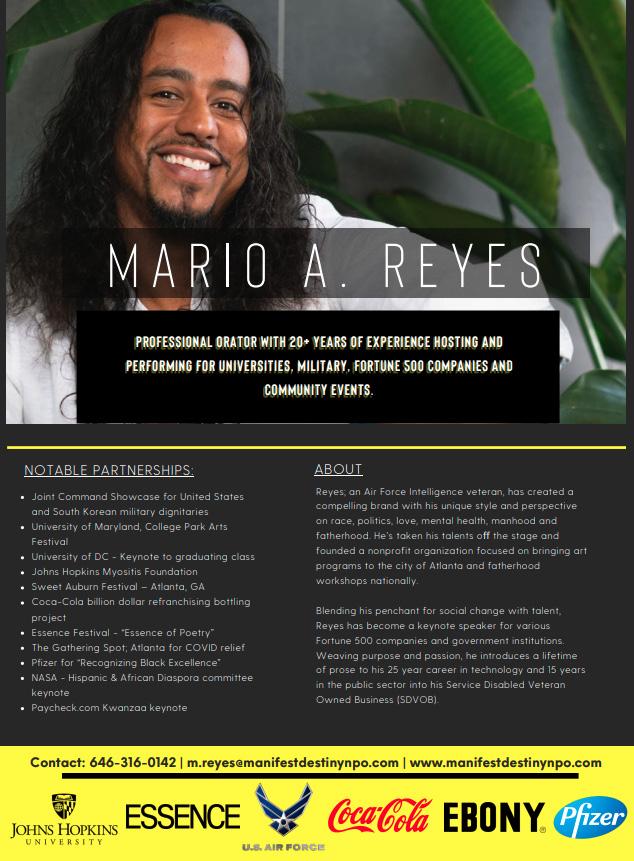
CLT Magazine | SPRING 2023 13
CONGRATULATIONS 2022 Regional
Regional Community Service Project of the Year
• SOUTH: Northwestern State University
"Pause for Paws"
• NORTHEAST: SUNY Morrisville
"Mustang Day of Service"
• MIDWEST: Kirkwood Community College
"Kirkwood Dance Marathon"
Regional Event of the Year
• SOUTH: Texas A&M Texarkana
"Embrace Your Goddess Energy: Women's Conference"
• NORTHEAST: York College of Pennsylvania
"Fright Fest"
• MIDWEST: University of Findlay
"Fall Leadership Retreat"
Regional Advisor of the Year

• SOUTH: Jenna Welch
Amarillo College
• NORTHEAST: De'Anna Hopkinson
Mohawk Valley Community College
• MIDWEST: Erin Smith
Des Moines Area Community College - Ankeny Campus
Regional Student of the Year
• SOUTH: Marisa Gonzalez
Texas A&M Galveston
• NORTHEAST: Adsel Sparrow
Castleton University
Regional Programming Board of the Year
• SOUTH: Lonestar Cyfair
Student Activity Board
• NORTHEAST: SUNY Cobleskill
Campus Engagement Board

• MIDWEST: Northeast Community College
Student Activities Council (SAC)
Agency of the Year
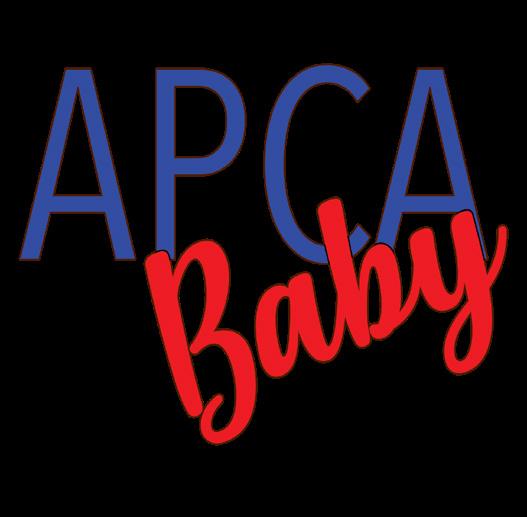
• SOUTH: Wally's World of Entertainment
• NORTHEAST: 2 Funny Entertainment
• MIDWEST: Houla Entertainment
CLT Magazine | SPRING 2023 14
CONGRATULATIONS Award Winners
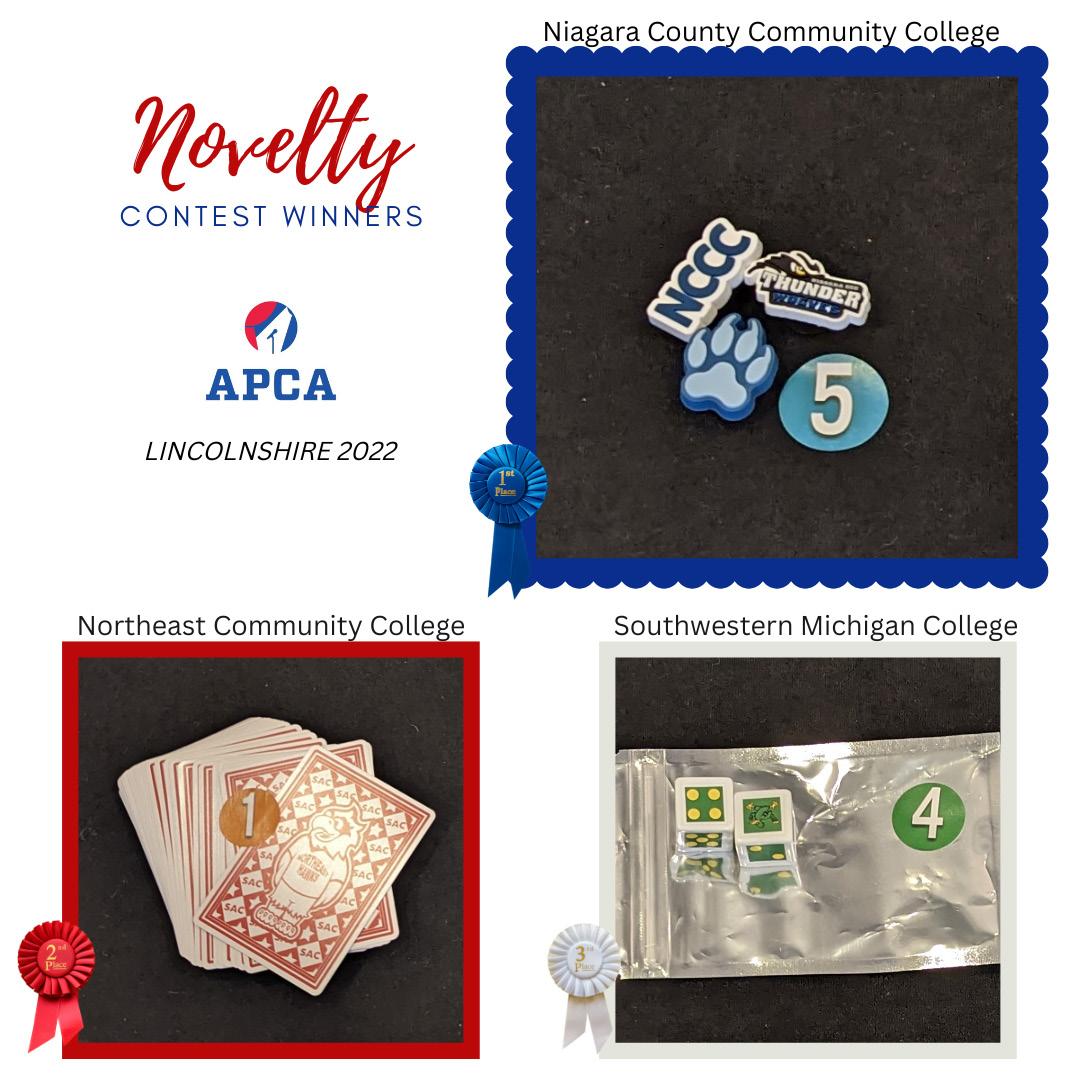
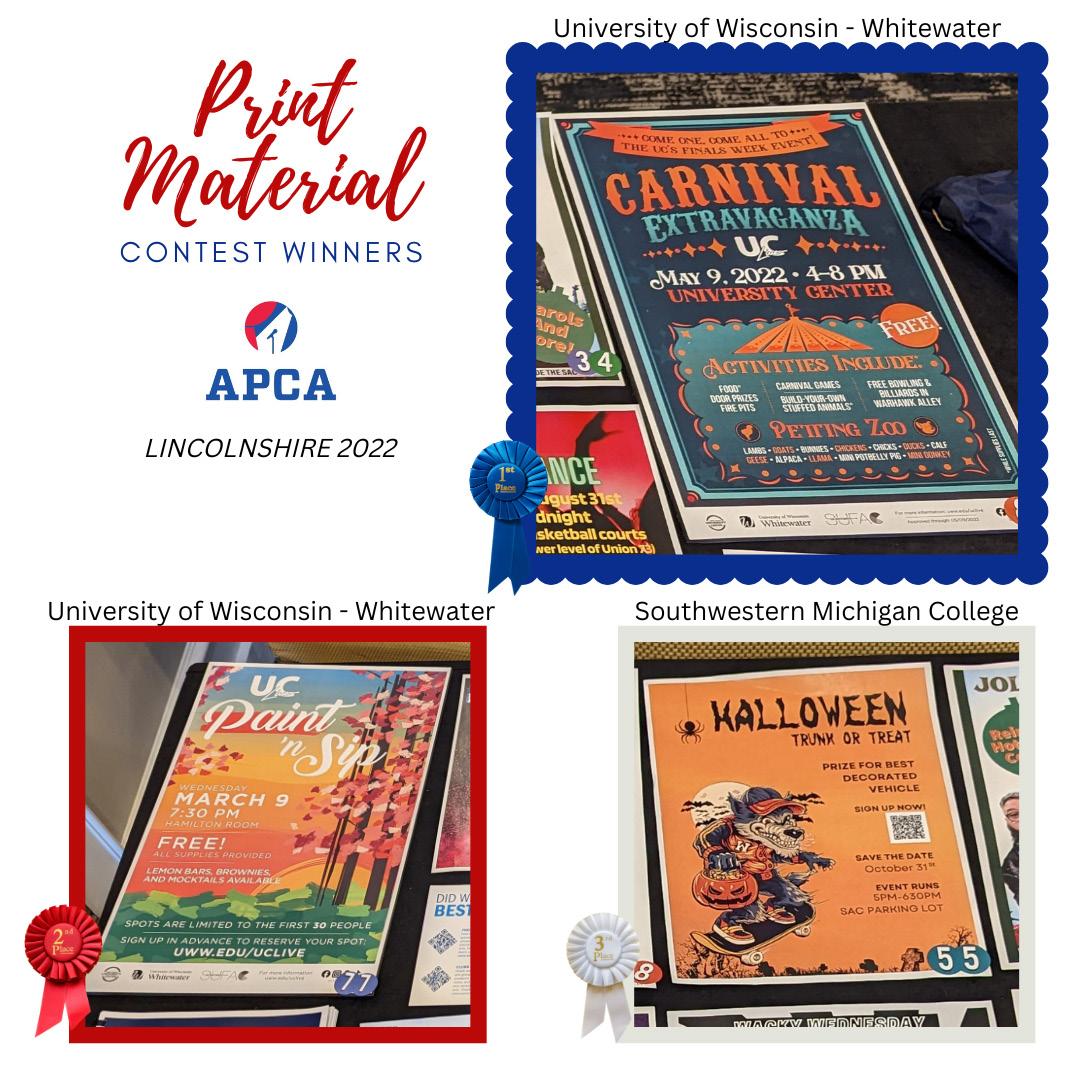
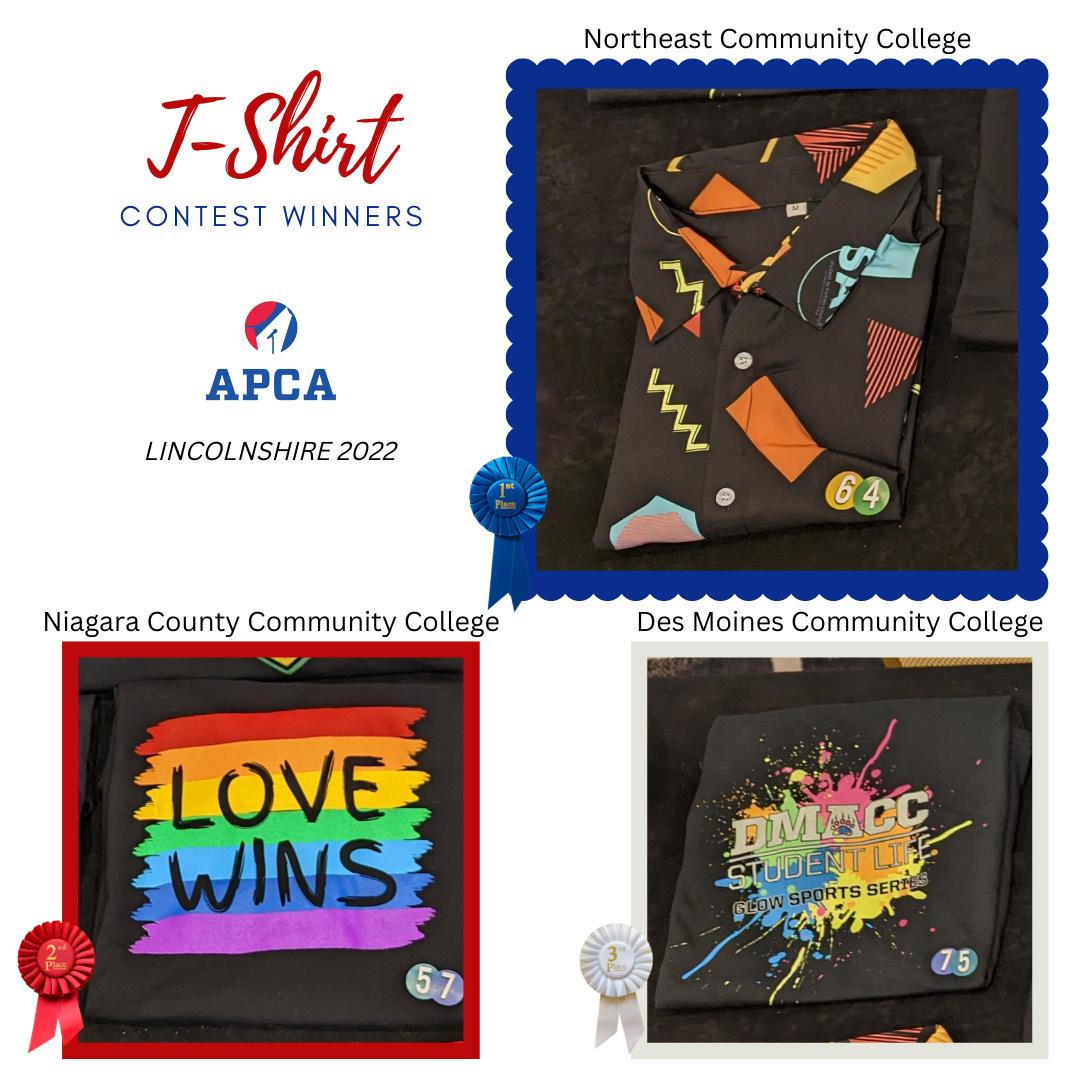
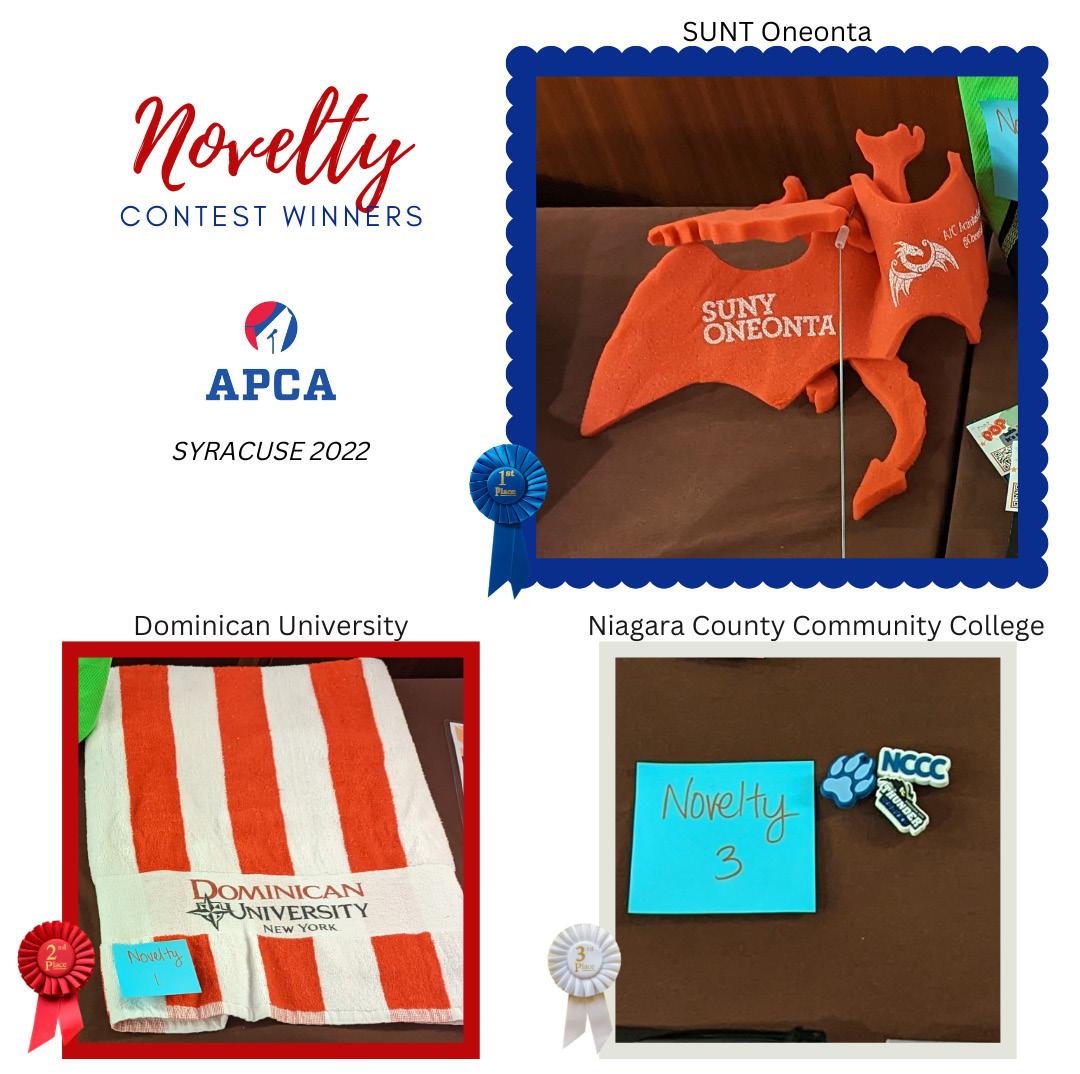

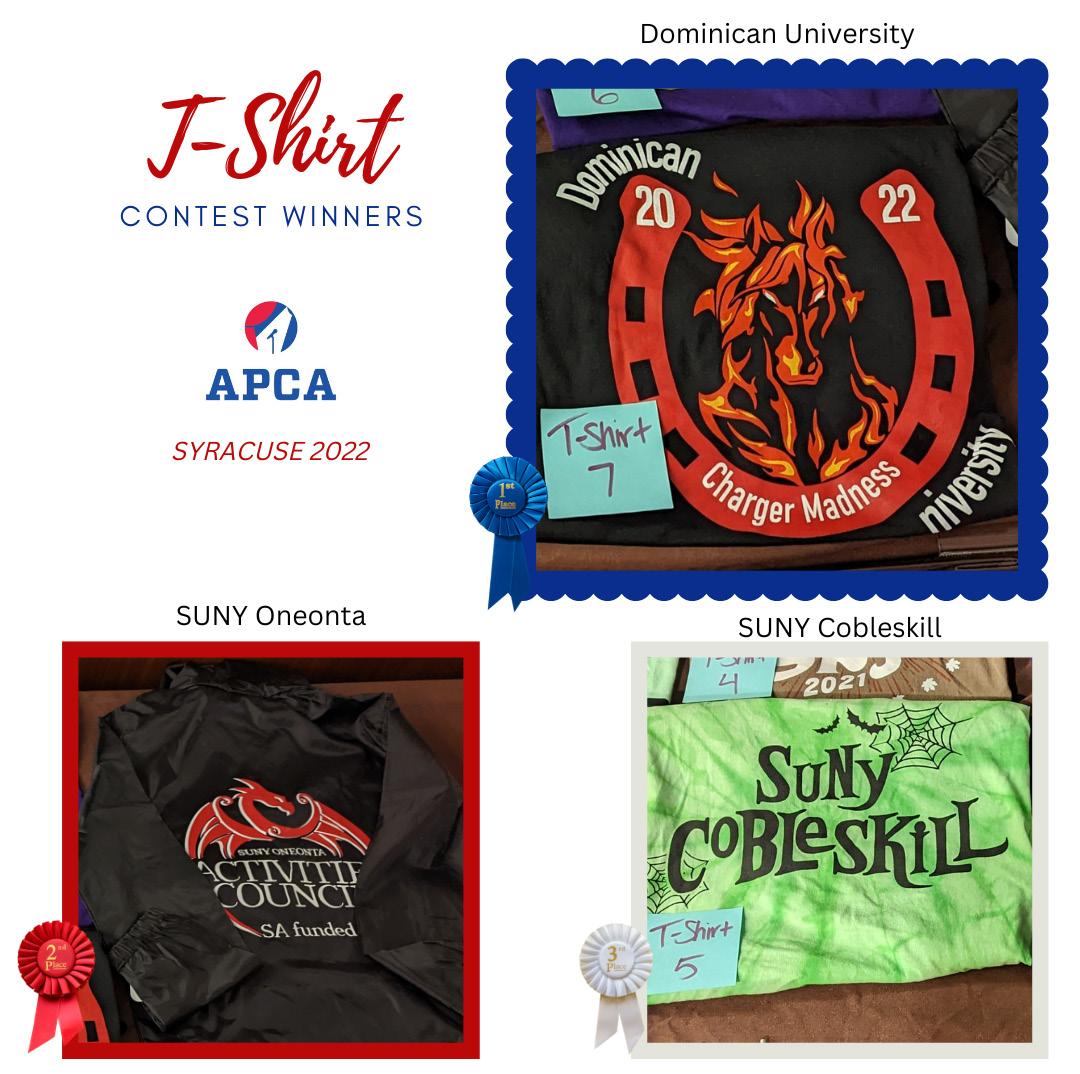


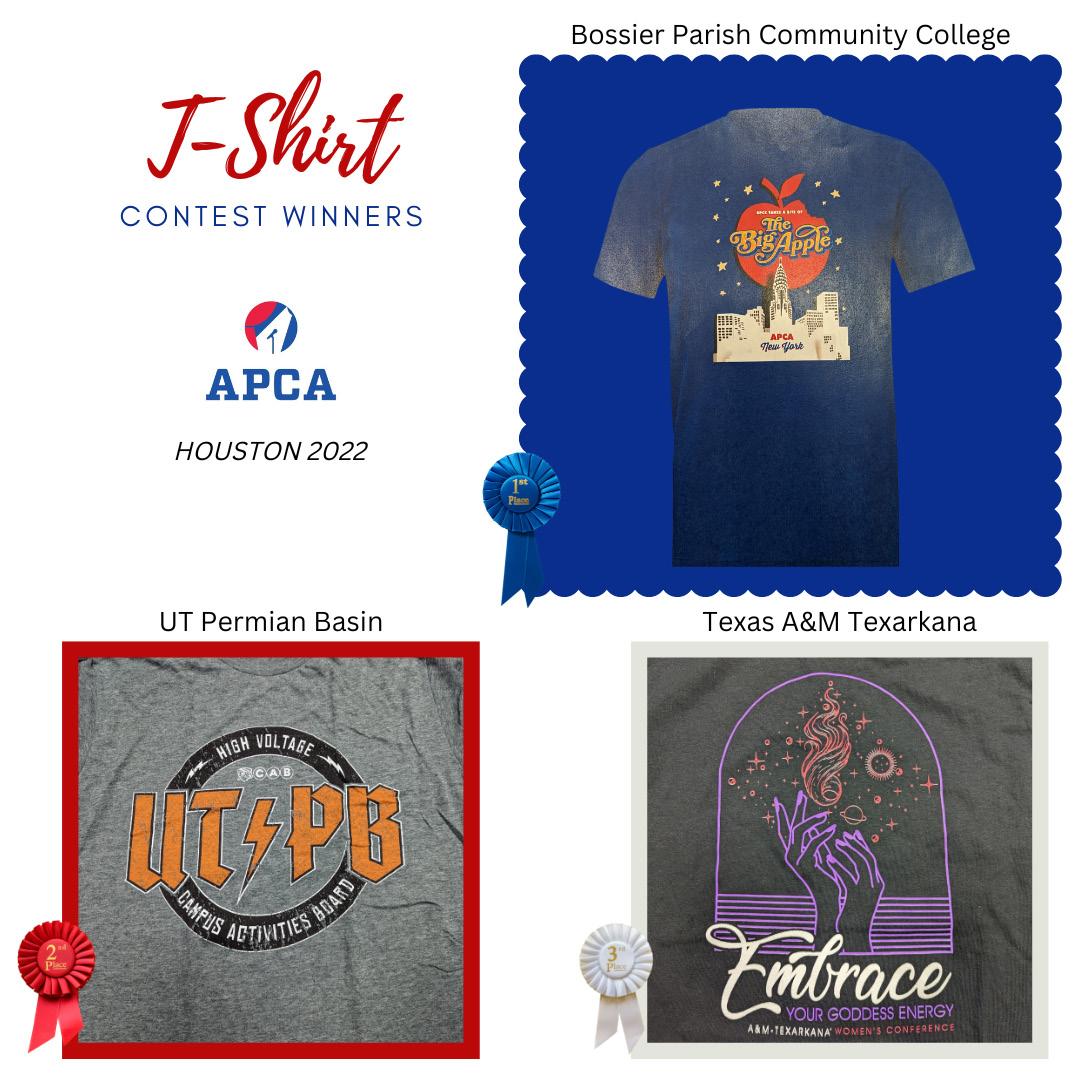

CLT Magazine | SPRING 2023 15
Transform Your Student Programming with Microfeedback: A
3-Step Blueprint for Data-Driven Decisions
Arel Moodie Co-Founder www.talkadot.com arel@talkadot.com

As a student affairs professional, you're probably thinking, "Of course I gather feedback from my students. What kind of professional would I be if I didn't?" But here's the thing, collecting feedback is just the first step. It's like buying all the ingredients for a cake but never actually baking it. Sure, you have all the necessary components, but without taking the time to process, analyze and turn it into actionable insights, it's just a pile of ingredients collecting dust in your pantry.
Imagine this, you're at an APCA after-conference get together with some colleagues, and someone asks you how your programming is going. You excitedly reply, "Great! We've been getting a lot of feedback from our students." But then they follow up with the million-dollar question, "Oh, that's fantastic! So, what are you doing with all that feedback?" And you're left stuttering, "Um, well, we're just collecting it. You know, for future reference."
Let's be real, no one wants to be that person. And more importantly, collecting feedback without taking the necessary steps to process, analyze and turn it into actionable insights is a wasted opportunity to improve the educational experience for your students.
I know, I know. It sounds scary, time-consuming and overwhelming to sift through all the feedback and make sense of it. But here's the thing, it's not just about finding the good feedback and ignoring the bad. It's about understanding the root cause of any negative feedback and finding ways to improve. And, let's be honest, isn't that what we're all here for? To make the educational experience better for our students?
And here's some food for thought: A study by the University of Southern California found that data-driven decision making leads to a 19% increase in student engagement and a 15% increase in retention rates. Now, I don't know about you, but those numbers speak for themselves.
Now, I know what you might be thinking, "But wait, I don't have time for this, I've got a million other things on my plate." And while it's true, we're all busy, it's important to remember that this is the core of our job. We're here to enhance the educational experience for our students, and without processing and analyzing feedback, we're just guessing at what they need.

CLT Magazine | SPRING 2023 16
Close the Experience Expectation Gap
But don't worry, we've got you covered! Closing what we call the "experience expectation gap" (the difference between the experience you believe you're offering versus what students are actually feeling) is a 3 step process:
Step 1) Collecting Quality Information
The initial and hardest part of making data-driven decisions is actually collecting data in the first place. We have found “micro-feedback” is the way to go. Have you ever gone to the restroom at the airport?
Have you ever seen one of those smiley face feedback screens as you leave?
Simply press the emoji and you are done.
Super fast and super simple. Microfeedback lets you tap into the voice of your students.
Asking people to fill out long, convoluted paper forms or long questionnaires is NOT what this generation will do.
The key is to get quick feedback that’s easy to give and takes as little lift as humanly possible. Survey fatigue is real. Consider how massive amounts of short feedback compiled over time can be way more valuable than a little feedback from a small slice of your audience.
Aim to keep the ENTIRE start to finish survey experience under 2 minutes.
Step 2) Analyzing the Collected Information
This is admittedly the hardest part for most people. Just throwing up an online form and getting a bunch of answers thrown into a spreadsheet that no one looks at has NEVER been the solution.
It’s like filling your trunk with items you want to donate to Goodwill and then just driving around for months with those donations sitting in your trunk. Good intent, poor execution.
The key is to set up a system that can turn your data into graphs that clearly visually display your quantitative data into charts that make sense to you. And have those charts compare over time to one another. It’s best to not make the survey participant think too much so they “nope out” of finishing the survey. A simple Likert scale works great and yes/no questions are fast and insightful.
Here’s an example of what you can measure for your educational programming efforts:
• The amount of people who took the survey (which you can compare to the total amount of people who attended as well)
• If they found the event valuable
• If they want to attend future events like this
• Was it relevant to their lives right now?
• Was the information actionable?
• How inspiring was the experience?
• How engaging was the delivery of the presentation?
This is a great way to benchmark what is working and what is not working over time. And gaining very quick qualitative data works well. Having people explain what they learned and what can be improved will go a long way.
This will allow you to be responsive to the changing needs of students, and help you use the data to help identify and address their most in the moment needs.
Step 3) Turning those Insights into Actions
Once you have your data analyzed, now this is where the rubber hits the road.
Collecting data is hard but actually turning it into something useful is even harder.
Especially when you consider how often people change jobs, so much institutional data gets lost. Data shouldn't be lost simply because someone changes a job.
Collecting and processing data is vital in understanding ongoing trends in attendee satisfaction so you can be more responsive to changes in your attendees needs and gain deeper insights into shifts students' activity in real time.
If you set up your data to automatically turn into visual reports so you don't have to do it manually, then you can easily look for trends as your data comes in.
Here’s some examples of trends to look for:
Notice Quantities
Analyze which events have the most feedback as well as highest positive sentiment. This will help set internal benchmarks of what's resonating over others (beyond just eyeballing it). Are they asking for changes you can make? For example, having celebrity speakers might be nice but not in your budget.
CLT Magazine | SPRING 2023 17
What is unexpected?
One client of ours discovered a phrase they were using was actually offensive to an ethnic group, though this person had no idea it was offensive. Because of this data, the uncomfortable use of that word on campus could be avoided in the future.
By following these steps, you'll be able to improve your programming, better understand the needs of your students and avoid being the person stuttering at networking events. You're not just collecting feedback for the sake of collecting it, you're using it to make a real impact. Plus, you'll be able to bake that metaphorical cake with confidence, and who doesn't love a good cake?
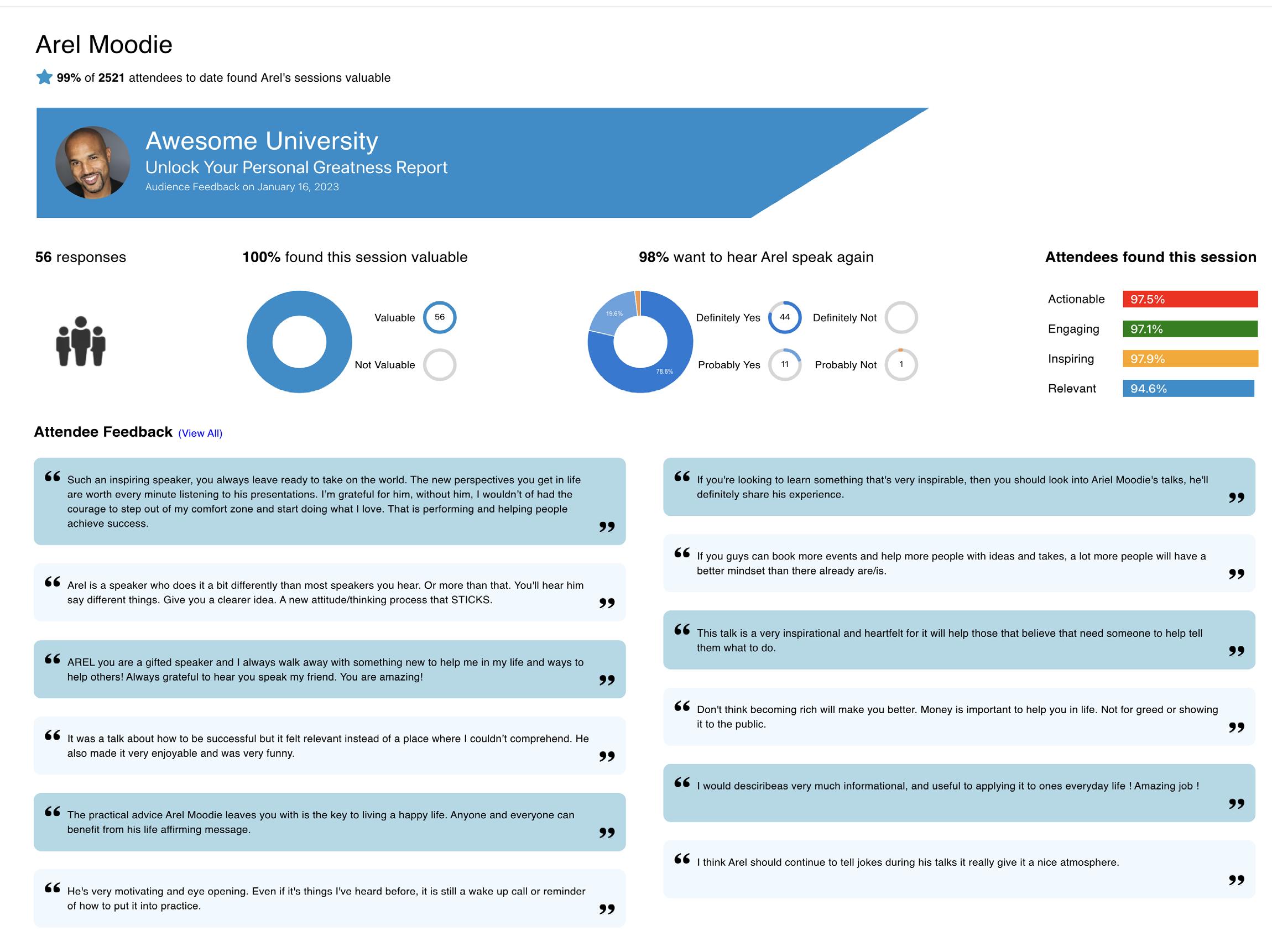
CLT Magazine | SPRING 2023 18
Arel Moodie has spent over 17 years speaking at colleges and now is the Co-Founder of www.Talkadot.com which is a software tool that lets you easily collect, beautifully analyze and make data-driven decisions for your events so you can make the best decisions without doing all the heavy lifting anymore.












V i s i t B r y a n Visit us in Hershey Booking now for 2023 S H A R G U I N . C O M B o o k i n g I n f o 5 4 0 . 6 8 6 . 1 3 9 7 i n f o @ s h a r g u i n . c o m APCA Showcase ARTIST CLT Magazine | SPRING 2023 19
The mission statement for APCA "is to promote campus engagement through quality educational experiences, affordable entertainment, and community service initiatives." One of the ways APCA seeks to promote communtity service is through our APCA Serves!™ program.

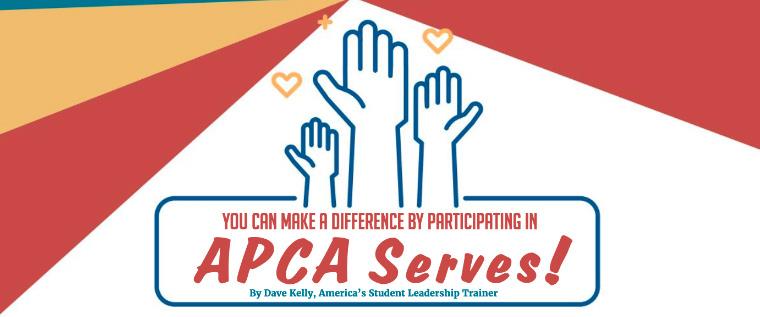
Since 2011, APCA has provided an oppoorunity for students and advisors to participate in service projects on-site at our regional and national programming conference and at the annual Leadership on Broadway Experience in New York City. These projects have included making peanut butter and jelly sandwiches for local shelters serving the homeless and hungry, creating doggie toys out of old t-shirts to give to animal shelters, providing hugging hands to nursing home residents and other seniors, sending Flat Stanley messages of support to service people overseas, assembling care kits for victims of sexual assault, making boo-boo bunnies for kids, and much more. These projects are done on-site in the conference registration area and are free for you to participate in, allowing us to impact the community where our event is held and also to give you ideas to take back and implement on your campus.
Big Bend Community College (WA) has assembled care kits for sexual assault victims each of the past two years during their student government retreat and has connected with agencies in the Moses Lake, WA area. Amarillo College (TX) did a day of service in which they had me present a leadership program, "Students as Serving Leaders" in the morning. We then made over 200 doggie tug toys after lunch taking them to two different shelters with a delegation of staff and students going for a tour at each. The shelter I went to serves many types
of animals in addition to dogs and cats, including abused and neglected horses, goats, and other farm animals. We learned of other opportunities to serve while there, and the college has continued their involvement with the shelter.
We have also done some larger, off-site projects at our conferences. In Atlanta, one year, during the national conference, APCA took a group of students to a local at-risk elementary school and the students read books and played games on the playground with kindergarteners and first graders. APCA hosted a day of service for hurricane victims. Doggie toys were made and donated to a local animal shelter.
More than 1,000 kits of food, snacks, necessities (donated by an APCA Associate members) were assembled and donated to a high school and college campus hit hard by a hurricane and to a local ministry serving young children. We made utensil rolls for use by agencies serving the elderly and the hungry, and much more. Over a dozen schools came a day early to serve!
How do you get involved? Attend an APCA conference and look for the APCA Serves!™ tables near registration. Learn ideas for easy-to-implement service projects and take them back to your campus. Create a committee in your SGA or your Programming Board dedicated to engaging students in serivce. Add service projects to already planned events, such as bands, comedians, and leadership conference.
Contact me at (404) 403-1481 or by email at davekelly@gonzospeaks.com for more ideas and ways to get your campus involved!
CLT Magazine | SPRING 2023 20
MIKE COTAYO IS THE FUNNY SHRINK
As The Funny Shrink, Mike guarantees a program that is educational, entertaining and engaging.
SHOWCASE TOPIC
Disability Etiquette
TAKE-AWAYS
How to define able-ism

How to avoid able-ist language
How to tastefully, and tactfully support someone with a disability
How to focus on someone’s abilities, not their disabilities
Identify innate biases when interacting with people with disabilities
Learn Person-First Language as it relates to those with disabilities
OTHER SPEAKING TOPICS
Anger Management
Male Sexual Assault Awareness
Self Esteem
Alcohol and Drug Addiction
Self Care
Suicide Prevention
...and many more
***Also available as a stand-up comedian
WORD ON THE STREET
“Mike is highly original and talented with an incredible ability to quickly attune to the audience in front of him and creatively find ways to move the situation forward ”

-Elinor Greenberg, PhD
“Borderline, Narcissistic and Schizoid Adaptations: The Pursuit of Love, Admiration and Safety”
“I saw Michael Cotayo at a world conference teaching with h umor, compassion and a striking ability to go to the core of complex issues ”
-Hiroko Demichelis, BCIA, EEG Founder of Vancouver Brain Lab
347-678-6287
thefunnyshrink@gmail.com
www.thefunnyshrink.com
CLT Magazine | SPRING 2023 21
When was the last time you played a game?
When was the last time you caught a ball or dealt out a deck of cards? Do you remember the last time you jumped rope or kicked a can? How long has it been since you opened a favorite board game or found the most elusive hiding spot in a high-stakes hide and seek contest?
Games are magic – through their rules, parts, and players, they use their simple fictions to teach us the facts about life. It is no coincidence that children learn to play games at such an early age; we learned how to be human by the games that we enjoyed as children. Our childhood games are and were so powerful because they taught us the vital skills that we would need to succeed in life. The games we play as adult learners are equally as valuable because they help us reconnect to that sense of intellectual curiosity of our youth as we hone those same skills. No matter how old we grow, there remains a tremendous power in playing.
The power of playing principle governs campus life programming. Games are the key to student attendance, engagement, and retention in campus life programming because they give students permission to play. Give your students an excuse to have fun again, and watch your campus programming be reimagined by unlocking their imaginations!
As someone who makes a living designing games, writing riddles, and crafting clues, it is astounding how a truth so self-evident remains so sparsely implemented. Hailing from Carnegie Mellon University, where I was both a Resident Advisor and Community Advisor as an
Scavenging for Success: Games and Greatness in Campus Life Programming
 Chris Sparks Surelocked In Escape Games escape@surelockedin.com
Chris Sparks Surelocked In Escape Games escape@surelockedin.com

undergrad, I witnessed firsthand the power of play galvanizing campus life programming. The secret to success was both its simplicity and scalability: challenge students to engage their imaginations, give them a chance to play, and let them have fun!
No matter how busy a student’s semester became, they would always show up for an entertainment experience. If campus life programmers advertised a vital “floor meeting” featuring necessary updates regarding dorm life or a session on destressing to ease into Final’s Week, the same few, loyal faces would attend. If campus life programmers hosted a board game night or pickup soccer game, there would be a waitlist.
While entertaining events for entertainment’s sake are all well and good, is there not a more effective way of communicating critical learning objectives and lessons to the students? How to both entertain and educate our adult learners with a single program? Like a medicinal pill hidden inside sweet candy, the trick was to carefully craft and tailor each event to teach the player the content that we wanted them to absorb, all under the guise of a simple game. Through trial and error, the clear favorite among the students and staff was found: thematic, immersive scavenger hunts.
Forget what you think you know about scavenger hunts – these new games revolutionized our campus life programming! These new scavenger hunts leveraged students’ competitive natures to the programmers’ advantage. Students were challenged to outscore their peers by racing to solve a series of riddles and complete a sequence of tasks before their opponents could do the same.
CLT Magazine | SPRING 2023 22
Unbeknownst to the players, we programmers had designed the scavenger hunt around the learning objectives and curriculum we wanted to impart upon our adult learners. Did students need to understand campus safety resources? There were riddles that lead players to health centers and tasks with campus safety officers. Did students need to be oriented and directed to various academic buildings? There were puzzles about libraries and clues in classrooms. Did new students need to familiarize themselves with the campus’ layout and culture? There were paths to victory that just so happened to be the most popular shortcuts across campus.
Through these scavenger hunts, we gamified the student experience. Transforming the world into a game granted programmers the ability to teach students without them realizing that they were even learning at all. Whether players won or lost was inconsequential next to the learning objectives imparted and the newfound success of campus life programming!
A successful program boasts high student attendance. In an increasingly demanding world, hosting an event prioritized by students already forced to balance far more than their generation should at such a young age seems impossible. How to persuade a stressed student to pick a campus life program over another hour of study or schoolwork? Enter an immersive scavenger hunt! On the surface, a fun game where the most taxing choice is how best to navigate the campus in the fastest manner possible. In reality, hours of students improving their mental health by relaxing and having fun!
A successful program fosters high student engagement. In an increasingly busy world, hosting an event where students are both present and engaged with the content is an increasingly herculean task. What program can compete with the entirety of the internet, shining on a screen in the palm of a student’s hand? Enter a competitive scavenger hunt! On the surface, a challenge to run around with fellow Freshmen at the end of Orientation Week, photographing locations and shooting videos. In reality, hours of students learning the layout of their new campus, all while generating social media content to promote their new university!
A successful program yields high student retention. In an increasingly isolated world, where a pandemic has fundamentally altered the stereotypical college experience, leveraging the latest technology to foster connections rather than deepen virtual isolation is paramount. What good is a campus’ programming if students feel disconnected from their school and their
peers? Enter a cooperative scavenger hunt! On the surface, a challenge to complete a list of tasks before the clock runs out. In reality, hours of students bonding and building relationships with their fellow players, connecting them to a community and disconnecting them from Zoom!

Games are the key to student attendance, engagement, and retention in campus life programming because they give students permission to play. Give your students an excuse to have fun and watch your campus programming be reimagined by unlocking their imaginations! Entertaining, immersive scavenger hunts allow programmers to gamify the student experience, transforming the world into a game that teaches students without them realizing that they are even learning at all.
Games are magic – through their rules, parts, and players, they use their simple fictions to teach us the facts about life, and the fact is: there is a tremendous power in play, and your students need programs that give them the chance to have fun again.

After all, when was the last time they played a game?

CLT Magazine | SPRING 2023 23


FOR MORE INFO and to preview a co-cop form, visit us online at www.apca.com or call (865) 429-9123 CLT Magazine | SPRING 2023 24

CLT Magazine | SPRING 2023 25
We talk about student engagement constantly at APCA. “Engaged Students are Retained Students” is the unofficial APCA motto.
Why is engagement considered so important? It's because engagement demonstrates an active involvement in learning. Students who are engaged are taking a proactive approach to their education. They are more focused on the learning that is taking place.
There has been a massive amount of research done over the last thirty-five years about the impact of engagement on student attrition. Without exception, the studies have all shown that engagement increases retention dramatically. Engagement is basically the difference between a student graduating and dropping out of college. It's that important.
Thanks to the on-going research by the National Survey on Student Engagement at Indiana University, we have years of evidence about the value of engagement. In 2008, Dr. George Kuh published High impact educational practices: What they are, who has access to them, and why they matter
Dr. Kuh has presented at a number of APCA events, and shared this information with us in person. Here is his list of the most valuable engagement practices.
The ten High Impact Practices defined by Dr. Kuh are all based on the classroom experience, and not the co-curricular world of Student Affairs. And yet, several of the HIPs can well be attained with students working in Student Activities and Student Development.
Getting and Keeping Students Engaged
Del Suggs, M.S.Ed del@delsuggs.com

The 10 High Impact Practices:
1. First-Year Experience or First-Year Seminars
2. Writing-intensive courses










3. Diversity/Global Learning
4. Common intellectual experience (core curriculum)
5. Undergraduate research
6. Capstone courses and projects
None of these lend themselves to the Student Life Office, at least not in an obvious manner. However, the last few do reach out for inclusion in the student development curriculum.
7. Internships: given the high impact of internships, these should be considered for students working with the Student Activities Board.
8. Collaborative assignments and projects: Students working closely on important projects and events are the essence of an effective Student Activities Board. These activities should clearly be transferable.
9. Learning Communities: While not a direct comparison to the living learning communities that are a part of residence life at many colleges, the collaboration that is involved between members of the Student Activities Board is clearly an apt comparison.
10. Service Learning: given the emphasis on community service at most campuses, this HIP is certainly one of the simplest examples of engagement in student activities.
By offering as many of the HIP elements as possible, the Student Activities Office can be a strong force in student engagement.
CLT Magazine | SPRING 2023 26
Organization Involvement


Communities of practice, organizations, and clubs on campus are another powerful force for engagement. We should be working to increase the number of students involved with these groups, and provide high levels of support to ensure their success.
1. Have an Activities / Involvement / Club Fair at the very beginning of each term. At these events, clubs can inform students about their activities and goals, and recruit new members.
2. Increase the number of clubs and organizations on campus by providing support and guidance. Foster a nurturing environment for new clubs to flourish.
3. Provide and require officer training for students to assure that clubs function effectively. Also provide advisor training, as effective advisors are essential to a campus organization survival.
4. Recognize and value involvement. Create awards and prizes for active and successful involvement.













5. Promote a co-curricular transcript. While this listing of student involvement is become more visible with every year, it is still uncommon. It provides strong encouragement to be involved on campus, and is a valuable marketing resource for job-seekers.















Increasing Campus Engagement
Getting students to attend and engage in activities and events is a struggle at nearly every college. While Campus Activities Boards work to increase attendance, there are multiple ways to get more students engaged.
1. More, smaller events. Many schools are locked in the practice of presenting large events such as concerts and festivals. Perhaps a more effective way to reach more students is to present multiple smaller events. By offering smaller programs at various times and locations, the SAB has the ability to reach more students.
2. Targeted audiences: presenting multiple programs enables the Student Activities Office to reach more specific audiences, such as non-traditional students, returning students, families, first-generation students, and more.

3. More interactive events: while continuing the traditional Student Activities offerings, perhaps SABs
should also present more interactive programs. Try adding more karaoke, open mics and poetry jams to your schedule.
4. Support for Residence Life programs. As students in Residence Halls have the opportunity of pursue more of the High-impact Practices, the Student Life Office should be supportive of these programs.
5. More learning-based programs and events: there are many opportunities for Student Activities Offices to present entertaining educational programs. There are a vast number of entertaining speakers, films, comedians, spoken word artists and more. Student Activities can truly be co-curricular.
6. Create student learning outcomes for all programs and events. It isn't difficult to demonstrate the contribution of activities and programs to the educational mission of the campus.
7. Create a culture of engagement. Requiring ID card swipes to attend events is not unusual. Take it a step further and have students respond to assessment surveys when they attend events. By making it a positive experience, recruiting champions to make assessment the norm, and providing positive reinforcement (rewards) can all generate a culture of engagement.

8. Embrace your role as an educator on campus. Remember Learning Reconsidered and understand that your contribution to student development is vital. Don't neglect your job as a teacher.
Student engagement is the key to student success. "Engaged Students are Retained Students” may be the unofficial APCA motto, and it's true. Engaged students have a higher level of retention, they have a higher GPA, and they are most likely to graduate. That is the goal of nearly every institution of higher education. Demonstrate your commitment to your campus mission by getting and keeping students engaged.
CLT Magazine | SPRING 2023 27
College life includes the joy, the excitement and hopefully the intellectual stimulation of attending numerous and varied events. Many of these events are sponsored by the college, and many by student organizations. Students join clubs, attend, or participate in athletic events, go to rallies, and join together in large groups at many other times and in numerous other forums.
What happens if a student is injured?
Legal Analysis and Examples
Liability for an injury requires negligence.
The first two questions after finding out how the injury occurred is (1) was there negligence? and (2) if so, who was negligent?
Here we examine potential school liability. A random act of violence in an environment with no history of violence, and where the event had appropriate security would probably result in a finding of no liability against the school. Unfortunately, on too many occasions, a school is responsible. A slip and fall injury on unrepaired and highly uneven steps would be expected to result in the injured party prevailing against the school responsible for maintaining the steps.
A school's responsibility for unsafe property conditions is a type of “premises liability.” School officials have the responsibility to maintain a safe environment for students -the officials act in loco parentis, which is a term meaning "in the place of parents" when children are in their care at school.
Negligence is defined as the failure to exercise the care that a reasonably prudent person would exercise in like circumstances.
Liability for StudentEvents
 Paul A. Samakow The Law Offices of Paul A. Samakow paul@samakowlaw.com
Paul A. Samakow The Law Offices of Paul A. Samakow paul@samakowlaw.com
Negligence is the primary legal theory applied in personal injury cases because it allows injured parties to recover damages for the careless actions of another. An injured party must prove four elements: (1) duty, (2) breach of duty, (3) causation, and (4) damages.

• A college or university owes a duty to keep the campus safe; and
• There must be a breach of this duty by not keeping the campus safe; and
• There must be a showing that by breaching this duty, the college’s actions became the actual and proximate cause of the plaintiff’s injuries; and
• The college’s negligent behavior caused the plaintiff to sustain an injury that resulted in actual damages (e.g., physical harm, hospital bills, medical expenses, emotional distress, etc.).
All colleges and universities owe some level of care to individuals on their campuses. The exact level of care varies due to differences in state laws.
Some Students are Minors
The presence of minors on campus for classes, summer camps and other events during the academic year is common at many colleges. The legal duty owed to minors by educational institutions is and for many years has been higher than the duty owed to adults. The doctrine of in loco parentis actually applies more with respect to minors. As a result, it is well settled that educational institutions “stand in the shoes of parents” in the eyes of the law with respect to their students who are under the age of 18.
Campus incidents have increased over the years and the trend in courts is to rule that these schools owe a higher legal duty of care to their students. However, this notion is restricted to situations where the institution has some control, and the potential for dangers is foreseeable.
CLT Magazine | SPRING 2023 28
Lawyers will argue the meaning of “reasonable” in virtually every situation. Courts then decide what was or was not reasonable if the parties are not able to resolve the situation before trial.
The next important word in the analysis of responsibility is “foreseeability.”
Cases involving injuries often turn on whether the injury was foreseeable. Negligence on the part of the school is most apparent in cases where the school knew of a specific danger but failed to take proper precautionary measures.

Injuries can occur in a myriad of ways. If bleachers fail and those sitting suffer injuries, claims may be made against the college and perhaps the manufacturer of the bleachers or the repair organization that may have done work on the bleachers prior to the failure. If excessive, uncontrolled crowd assembly causes a “stampede” and there is an injury, this suggests a failure of security and crowd control, and injured individuals will have claims. If a fight breaks out, again, there was probably a failure of security or crowd control. Lighting at an event might be faulty and might be the cause of fall-down injuries.
There once was a universal exclusion, protecting arenas at sporting events, for injuries to spectators from balls or other objects of play flying into the stands. It is called simply The Baseball Rule. Now, claims are more and more being made upon a showing that the facility failed to put up netting or plastic barriers (think ice hockey arenas) that would prevent the objects from injuring spectators.
General Exceptions from Liability
Some important exceptions apply when it comes to a school's liability for a student's injuries. First, a school generally will not be liable for injuries that occur on school property outside school hours or outside school-sponsored events. If a school had no duty to supervise or if it was not sponsoring an event, likely there would be no finding of responsibility. This is particularly true if efforts were made to keep people off school property during non-school hours (fencing and locked gates, for example).
Another important exception to a school's liability for injuries involves organized sports. If a student breaks an ankle while playing football, the legal defense of “assumption of the risk” typically prevents a successful claim by the injured party.
Potential Result
If an injury claim is successful, a student may be able to recover remedies or damages, including:
• Compensatory damages: Both economic and non-economic compensatory damages may be available. This includes reimbursements for medical expenses, hospital bills, loss of income (if employed), loss of future income, wrongful death, pain and suffering, and emotional distress.
• Punitive damages: Punitive damages may be difficult to obtain as they are often only awarded in extreme cases. However, if an institution knew or should have known their campus was not safe, was repeatedly sued or had multiple incidents occur, and continued to do nothing to make their students safer, then a court might award punitive damages.
• Other remedies: Being ordered to implement new systems and policies to make a campus safer, changing safety policies, creating a safety education program, requiring students and employees to take safety courses, and/or taking actions against perpetrators (e.g., school expels perpetrator).
Resolution
It is important to appreciate that very few cases ever reach a courtroom trial. The reason is that both parties fear worse results if the matter does go to trial. Both “sides” have an incentive to resolve the claims. Trial results could be worse than an agreed resolution.
Liability Insurance
Many colleges and universities have Registered Student Organizations (RSO’s). Liability insurance policies often cover their activities. The RSO insurance policy typically provides protection if the student organization, its officers, or members are sued as the result of an injury or loss at an event. Note that this insurance does not provide accident health coverage to the injured party. This is a separate type of insurance that may be required, particularly for sporting events.
College and student organization event coordinators should get insurance that provides coverage in at least one million dollars ($1,000,000.00) per person/per occurrence, and the insurance company should be notified prior to the event so the specific event is identified as to the date and type of event being planned. Further, the “named” insureds (the individuals who might be named as defendants) should be identified, such as, again, officers, directors, planners, members of the organization, and, specifically, the organization itself.
CLT Magazine | SPRING 2023 29
Another important coverage, different from “health insurance” is “accident medical coverage.” This coverage might provide up to $5,000.00, designed to help the injured person with medical bills in the event of an injury, and it is not an admission of responsibility. Colleges often have insurance to cover RSO events and are paid for by the college. RSO’s are encouraged to assure such coverage exists prior to planned events, and are also encouraged to consider obtaining additional coverage, depending upon the nature of the event.
Planning
How can an organization protect itself?
To prevent widespread injuries, both the law and institutions often require:

• The creation of and disclosure of safety and security policies; and
• The publication of annual crime statistics and keeping a crime log; and
• Providing a system that alerts students and employees about an immediate or ongoing safety concern or threat; and
• Implementing and educating, and disclosing programs for certain crimes, such as domestic violence and sexual assault.
At athletic events, colleges can take steps to protect fans from harm while at the same time reducing the risk of institutional liability. Colleges can:
• Print a notice on all event tickets for sports in which fans could be injured (e.g., football, baseball, hockey) indicating that the sport is an inherently dangerous one, that fans could be injured by flying balls or persons diving for them, and that the spectator assumes all risks of injury or harm. While this disclaimer will not necessarily protect the college from being sued or being found responsible, it is advisable to have the warning.
• Install a net or raise it behind the goal post, batter’s box, and along base paths to prevent the possibility of errant pucks or baseballs flying over them.
• Announce at the beginning of each game that there is a potential danger of balls flying over rails or nets.
Concerning general personal safety on campus, schools must use appropriate care and conduct adequate background checks when hiring teachers, coaches, and other staff. A school could be civilly liable for the sexual or other assault of a student if the school knew (or should
have known under the circumstances) that the offending school employee had a history of inappropriate conduct.
Action Steps For Personal Safety
• Prepare brochures about safety and security on the campus and in the dormitories and distribute them to all guests who come on campus and stay in dormitories or other residential facilities (e.g., overnight athletic camps, academic programs, elder hostels).
• Conduct a brief and informal orientation session (or distributing a video presentation to individuals staying in dorms) about safety and security on the campus and include as any rules, regulations, or recommendations on the subject. Existing materials already provided to residential students during the academic year may suffice or be easily adaptable for this purpose.
• Make sure minors staying in dormitories are adequately supervised, day and night, and that those supervising are qualified to do so.
• Screen those on campus who work with minors using the sex offender registry and perform criminal background checks on them as allowed by law in advance of hiring them.
• Train and orient event staff, buildings and grounds and maintenance personnel on campus to engage in proactive risk management. Reward them for identifying problems and bringing forward good suggestions to make the campus a safer place.
Final Thoughts on Mitigating Responsibility and Damages
Here are some, but not an exclusive list, of Mr. Samakow’s experience-based thoughts (42+ years as a plaintiff’s attorney) for consideration.
1. Offer only facts. Train campus police, fire and emergency personnel employed by the University not to make admissions or express their personal opinions at the accident scene or afterwards (verbally or in writing) concerning who was at fault for the incident, how the University will or should handle it, whether there have been prior similar accidents in the past, etc. These personnel should simply do their jobs and write down the facts, and only the facts, in writing their reports.
2. Utilize the Attorney-Client Privilege. When personal injury accidents or incidents occur and there is any chance that the University may have some share of responsibility for them, involve in-house attorneys immediately and copy or direct all internal
CLT Magazine | SPRING 2023 30
communications concerning the incident, its investigation, recommendations for subsequent remedial action or repairs to these attorneys. Do not copy non-employees of the institution without an attorney’s prior authorization. This will help protect communications from disclosure in the event of litigation.
3. The Work Product Doctrine. When a serious accident or incident occurs and as soon as litigation seems imminent, in-house counsel should either investigate it on behalf of the University or request, in writing, that another employee or agent of the institution do so, expressly stating in the written request that litigation is anticipated in the matter and requesting that the investigator direct his or her report to the institution’s attorneys. This approach can help protect the investigator’s documents and materials from disclosure in the event of subsequent litigation regarding the incident. “Work Product” cannot normally be “discovered” by the “other side.”
4. Circulation of Incident Reports. Have campus police, fire and ambulance incident reports involving personal injuries and property damage occurring on university property automatically forwarded to the institution’s risk manager. If litigation against the institution seems possible because of the incident, have the incident reports forwarded promptly by the risk manager to the school’s attorneys.
5. Kindness works. When accidents or injuries do occur on campus, be pro-active in your response. Approach the potential claimant first and, without making admissions or apologies, express concern for their well-being, check-up on them regularly to see how they are getting along and follow up with them over time. This compassionate approach can sometimes help prevent a claim from ever being filed or a claimant from hiring an attorney. If they threaten to sue or make demands, ask them what it is they want from the institution. If they tell you, inform them you will check into it and get back to them. Then check with the institution’s attorney. It is often pleasantly surprising what claimants want early on.
6. Apologies, admissions, and other problems
Unfortunately, an apology is treated in many jurisdictions as an admission of fault when it is made by a defendant or potential defendant. It can be used against the college unless it is very carefully worded. Before making statements or issuing letters of apology or admitting fault, consult with the institution’s attorney and give them advanced input into what you say. Carefully written apologies which do not admit fault might prevent claims from turning into lawsuits.
7. Pick your battles. If it appears that the institution has clear liability, try to settle it early and get a signed release of all claims. It costs less (in money, time, and negative publicity) than waiting until the claimant has retained an attorney, filed suit, and litigated for several years. The best lawsuit is always a settled lawsuit given the uncertainties of litigation.
8. Alternative Dispute Resolution – mediation or arbitration. Consider resolving disputes and claims via early mediation. Mediation is an informal settlement process facilitated by a neutral third party. It can save the institution a great deal of time and money, particularly if it is used before a lawsuit is filed. While there is no guarantee, mediation has an excellent track record of success. It often resolves a dispute in less than a day, rather than taking years of protracted litigation. The key is using mediation early, before the attorney’s fees and costs get too high.
9. Form a Risk Assessment Committee. At a minimum, the Committee should include an attorney from the University’s legal staff (to help protect the Committee’s discussions and deliberations from subsequent disclosure under the attorney-client privilege), as well as a representative of the Department of Risk Management. These individuals are generally familiar with the types of injuries and claims that have been occurring on campus. They also should be knowledgeable of the greatest areas of potential liability exposure and risk facing the institution. In addition, a representative from the University’s business operations area (preferably someone with budget authority to help fund implementation of the Committee’s recommendations), and a representative from the facilities operations or buildings and grounds area who can oversee implementation should be involved. Finally, representatives from the Student Affairs staff and individuals with authority over the campus police, fire department and athletic events should be considered as members.
The purpose of the Risk Assessment Committee is to identify areas of potential legal liability and activities posing the greatest risk of injury or property damage, on and off campus, in connection with the University’s activities and programs.
Paul Samakow has been a Plaintiff’s Personal Injury Attorney for more than 42 years and he has both a local (Washington, D.C. area) and a national practice representing injured people. He is an 8x author, a former radio-host, a lecturer, and a professional speaker. www.samakowlaw.com

CLT Magazine | SPRING 2023 31
Students are concerned. School violence. LGBTQ rights. Racial equality. The environment. And more.
Paul shares that going to law school can be an end in itself – it doesn’t mean becoming a lawyer. His presentation provides possible solutions for students’ concerns. People with law degrees make things happen. Seventy percent of all legislators (local, state, national) have law degrees.



Having a law degree means better communication skills. More self-con dence. Better persuasive skills. Better organizational skills. Better “think on your feet” skills. Better job opportunities. Respect. Awe. Status. Unlimited job/career possibilities.


Invite Paul Samakow, Million-Dollar Club Plainti ’s Attorney, 8x Author, Syndicated Columnist, Radio Host, Business Consultant - to speak to your college or university students.



• Engaging
• Entertaining
• Humorous
• Thought Provoking
• Challenging
CLT Magazine | SPRING 2023 32
Connection with your audience is a key component in order for an advisor, teacher, or individual to achieve a level of success. As teachers, leaders, and advisors, it is our job to influence our students and colleagues; in some cases, this may mean taking brave action in the face of challenges and discomfort. Regardless of the subject, this can feel like an insurmountable task. What can a leader do to get their audience on their side and make that essential connection?
The connection to your audience will be dependent on 3 key components -
1. The speaker must understand the wants and needs of their audience.
2. The audience must believe the speaker is an ally to their best interest.
3. The speaker must paint an exciting and inspiring picture in order to generate a sense of emotional engagement.
The level of commitment that the student or any individual exhibits for any task will be dependent on the level of emotional engagement. According to the Cognitive Behavioral Therapy Model of Emotions, our thoughts will trigger an emotional response – it is emotion that then drives an individual to take action.
This is actually what any commercial is hoping to do when they interrupt your favorite TV show! Ben and Jerry’s might display a delicious looking new flavor of ice cream, which will then trigger the viewer into an emotional response of “I want to eat that” or “OOOH, yum!” This then will inspire the viewer to go out and buy a pint of Ben and Jerry’s ice cream. The commercial was successful because it fulfilled all three components

Engagement Through Storytelling and Humor
 Aidan Park
Aidan Park
mentioned above. They understand their audience’s needs, because they know to air the commercial after dinner, when most people are thinking of dessert. They know the audience can trust them, because Ben and Jerry’s is a well known and established brand with a track record of decades of delicious offerings. With colorful graphics and an amusing storyline featuring a beleaguered housewife in heavenly ecstasy after her first bite of Chunky Monkey, this commercial has successfully triggered an emotional response which could potentially lead to the action on the part of the viewer – they end up hopping in their car and driving to the nearby convenience store, or the Chunky Monkey flavor is added to the next day’s grocery shopping list.
To inspire students and colleagues effectively, we must be like this Ben and Jerry’s commercial – we must paint a clear and exciting picture of what is possible in order to trigger the desired emotional response. We must provide the “commercial” for an exciting future that is possible for our team members and students. Much like the commercial, we can use humor and the power of storytelling as tools to generate trust, motivation and inspiration through emotional engagement.
tim@gpentertainment.com
CLT Magazine | SPRING 2023 33
GP Entertainment
I was once hired on as a lead consultant to create a curriculum for financial wellness for an organization which is committed to helping its members achieve upward financial mobility. One of the challenges that the organization faced was that while they provided all the necessary technical tools for upward financial mobility, they had a hard time getting clients to stick to the recommended suggestions for improvement.
The reason for this was because every client had a very different and individual reason for wanting to create financial improvement. One client wanted to create generational wealth so as to provide security and safety for their children. Another client had dreams of traveling the world to have new adventures and experiences. Another client wanted to feel a sense of independence so she could have the freedom to do whatever she wanted.
The problem was that the organization leaders provided excellent tools for change such as bookkeeping tools, strategies to pay back debt, and even resources for higher paying jobs, without fully demonstrating an understanding for the emotional reasons behind each individual’s desires for better circumstances. As a result, clients largely did not feel seen or heard on what issues were important to them. This did not establish a sense of trust between the administrator and the client. In addition, they could not see the connection between taking the recommended action and the emotional end result for which they were aiming.
So in an effort to establish trust and to create a sense of being emotionally understood, I made the following speech -

“Hi guys, I am Aidan Park here to speak to you about financial mobility! I know I look like I come from a ton of affluence because I am tall and I smile a lot. People think I was born at the end of a cul-de-sac to a couple of dentists in Orange County. But I just happen to be lucky enough to be born with such straight teeth! Actually, I was raised by a single grandmother in government housing and was even at one point homeless. I have used a lot of the tools you are gonna receive today! So whatever your reason for wanting financial solvency may be… it may be that you want a sense of security for your loved ones, or maybe you want more adventures and excitement in your life, or maybe you want more freedom to do what you want, I know that what you will learn today will help you.”
The previous paragraph established understanding and trust with the audience by telling them that I have personal experience in the matter at hand. I used humor to defuse the tension of discussing the often uncomfortable topic of finances. I also directly hit upon and appealed to the emotional desires of some of the clients. Later on in the seminar, I would go on to ask each client to make a list of why they might want financial solvency and create an appeal aimed at their wishes. This led to greater client motivation and follow through.
This method of engagement through storytelling and humor can even be effective in very difficult personal matters. I have a personal story that will paint this picture! One of my passions in life is advocating for those who are living with HIV. I am not only the founder of my own organization (called The Yay Foundation) which is dedicated to empowering young people with the right mindset for success, I am also an ambassador for the organization Keep a Child Alive, a group that is committed to empowering children and young people living with HIV with resources, confidence, and opportunities for success.
When I speak to young people with HIV, I realize that my mission is to encourage them, so I like to say this to everyone in the beginning…
“I have been HIV positive now for seventeen years! For those of you who are negative, don’t worry, you can’t get it from jokes! I am a picture of good health…in fact, I am so strong and so fast that if someone were to walk in here and threaten us all with violence, I definitely could… push you all out of the way and get out the backdoor first. I’m fast and strong, and I am also smart enough not to mess with an attacker!”
CLT Magazine | SPRING 2023 34
This anecdote accomplishes the goals of understanding the audience and winning their trust by:
1. Establishing to the audience that I, as a speaker, am self aware,
2. Using humor to ease tension surrounding what most consider a sensitive topic,
3. Painting a picture that shows the possibility of a happy, healthy life as an HIV Positive person, with the intention of triggering the emotions of hope and optimism for a bright future for young people who were diagnosed the same way,
4. Demonstrating vulnerability up front, by sharing something about myself using humor, establishing and allowing trust for me with the crowd.
Most importantly, the speech might have inspired emotions of amusement, trust, optimism, positivity, and compassion. All of those inspirations will then, hopefully, inspire audience members to keep up with unpleasant tasks such as going in for a regular check up, studying for an exam they might otherwise not take seriously, or even establish friendships with others by demonstrating more worthiness and confidence.
Whatever the topic may be, if you understand your audience’s emotional motivations, the use of storytelling combined humor can be a powerful combination to generate inspiration and engagement for your group or organization.

CLT Magazine | SPRING 2023 35
AIDAN PARK THE ART OF BEING YAY!
The brand that brings you funny with a twist of empowerment. Your guide to yay-ful living.
Live or Virtual 60-minute Comedy Special
Aidan takes his stand-up comedy act to the next level in The Art of Being Yay Experience!

The show invites the audience into the juicy details of his personal life. It begins with his childhood in Korea, his HIV diagnosis at age 19 and ends with the loss of his husband Michael to cancer in 2018 Through his personal anecdotes he carefully applies empowering thought tools and principles for emotional wellness, laughter included!


"I recommend Aidan's Art of Being Yay to anyone who needs a hug, an emotional boost or a roaring good time.” Margaret
A Bestselling Book

In The Art of Being YAY! Aidan tells juicy anecdotes from his life that out drama a Lifetime Channel movie. Through his stories he applies empowering thought tools and principles for emotional wellness Aidan was born in South Korea to a single mother and a father with a secret, second family His life started out resembling a sordid soap opera It didn’t get any less dramatic When he was nine he fled to the United States with his mother He was thrust into a foreign culture with no real support You'll have to read the book for more hilarious anecdotes and tools for joy!
 Foreword by Margaret Cho
Foreword by Margaret Cho

8-Week Empowerment Seminars With Customizable Wellness Curriculum

Due to the book's success during Covid, the brand has empowered these communities with laughter and wellness via virtual seminars, complete with original wellness curriculum


"Honest, bold, side-splitting laughs!"
Laura Newton, American Cancer Society
Aidan lends his acting and producing talents to create content that is funny but also empowering and hopeful. His acting credits include: Over 30 theatre productions, including American Conservatory Theatre and American Musical Theatre. 30+ national commercials under his belt, and he performs stand-up comedy at the most respected comedy clubs in the country
The brand also offers:
Michelle Neff Hernandez, Founder/Executive Director, Soaring Spirits International
Cho, Comedian
Online @aidanparkshow TheArtofBeingYay.com
“ A i d a n h a s a g i f t f o r m a k i n g r e a l l i f e s e e m n o t o n l y b e a r a b l e b u t h i l a r i o u s . ”
Better Newsletter"
Wellness Video
Bloggers
Funnies!
Weekly "Feel
Weekly
Blog Guest
YAY
CLT Magazine | SPRING 2023 36



AN
TRANSFORMATIONAL INSIGHTS 2023 NATIONAL APCA CONFERENCE
A 5-MINUTE PREVIEW OF
KEYNOTE ���� TOP YOUTH SPEAKERS CLT Magazine | SPRING 2023 37
AUTISTIC BROADWAY ACTOR'S
WATCH
MICKEY'S

CLT Magazine | SPRING 2023 38






















 Eric Lambert
Eric Lambert

















 Stacey Sottung OnCampusText
Stacey Sottung OnCampusText

























































 Chris Sparks Surelocked In Escape Games escape@surelockedin.com
Chris Sparks Surelocked In Escape Games escape@surelockedin.com










































 Paul A. Samakow The Law Offices of Paul A. Samakow paul@samakowlaw.com
Paul A. Samakow The Law Offices of Paul A. Samakow paul@samakowlaw.com











 Aidan Park
Aidan Park






 Foreword by Margaret Cho
Foreword by Margaret Cho







